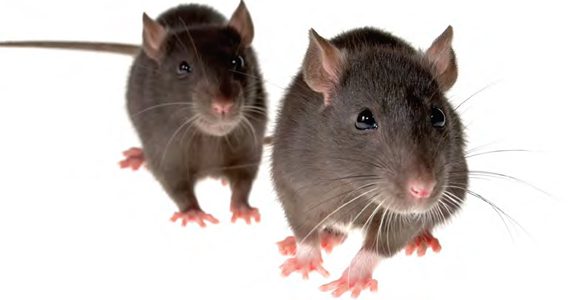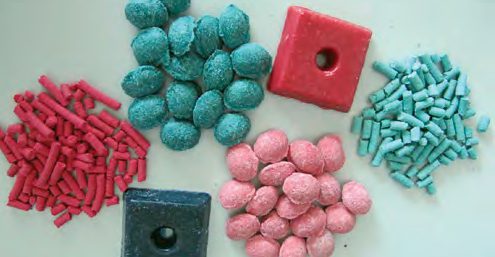Rodent control is an issue that has to be addressed by all horse owners who also own dogs. This article relates to some plans that might be applied, and the issues relating to veterinary therapy to treat a poisoned dog.
by Rod Stephenson BVSc MVSc
PAC VETS for horses and all farm animals
Horses sometimes eat ‘Ratsak’ when they get into feed sheds and find an attractive bait, however it is usually the ‘pooch’ that eats the bait or the sick rodent.
The rodent problem is a difficult one given the need to have horse feeds on hand, and horses being messy eaters.
Additionally, rodents can also attract snakes that then create a greater potential threat to people, dogs and horses.
This scenario has to be addressed by all horse owners who also own dogs, and usually it means various strategies from ‘not much at all’, to being very fastidious about secure feed bins, and / or careful baiting.
Obviously, attention to all the details necessary to minimise both rodents, and to avoid the need to use baits is the best strategy for ‘peace of mind’.
However under the best practical conditions, rodents can still become an out of control problem that might put your dog at risk, if you have to resort to baiting.
A rodent control plan
- Be diligent with the security of feedstuffs that are attractive to rodents, and especially ensure all concentrates are secure in rodent proof bins.
- Regulary do a ‘spring’ clean of your feedshed, especially at the start of Spring.
- Set up some mice and rat traps to check on any rodents that might be sneaking around when you are ‘asleep’ [if you are a bit sqeamish, simply put out new traps after each successful catch – the cost is low comparative to the cost of baits and the potential of poisoning your dog].
- Some of you might prefer to use traps that do not harm the rodent, however I have found this can lead to a problem when it comes to the next step of relocation of the captured pest.
- Some people have an effective strategy with the use of cats for catching and / or chooks to pick up spilt feedstuffs.
- Baits should be used as a last resort, especially if you have a plague that has broken out in Spring / early Summer.
Baits cannot be 100% safe given the variables that cannot be controlled viz: –
- Baits can be inadvertently moved from safe locations.
- Baits can be accessed by some dogs that employ ingenious methods.
- Baits that are labelled ‘pet safe’ can still cause toxicity in
your dog. - Baited rodents that are sick are easy ‘pickings’ for the vigilant dog.
- Weather conditions can cause baits to be flushed out of protective stations.
Importantly, any combinations of the above control points will also reduce the possibility of snakes being attracted to the rodent population and stable surrounds.
Rat Bait Toxicity
Rat Bait toxicity causes haemorrhage in animals because the active ingredient interferes with the clotting mechanism of blood. The small capillaries then ‘leak’ blood into surrounding tissue, and in severe cases blood pools in body cavities, and some can then discharge from the bowel and / or nose. This obviously quickly leads to the demise of rodents, and sometimes your dog if it is not treated quickly.
All veterinary practices have seen the whole range of poisonings in all types of dogs. The clinical signs vary markedly – from being slightly unwell with slight changes in behaviour, to massive bleeding from the lungs and out through the nose.
Fortunately, most owners realise quickly when poisoning has occurred, and know that induction of vomiting is the fastest method to stop further absorption from the gut.

Vitamin K [VitK] is one of the most important follow-up therapies. Irrespective of the active ingredient in the Ratsak, VitK assists in restoring the clotting processes. The 1st Generation poisons such as those containing Warfarin, require lesser duration of post poisoning therapy, compared with 2nd Generation poisons [including some labelled pet safe].
Cost of treatment including VitK therapy over extended periods
Cost of initial treatment can be compounded by ongoing tests to check blood clotting time, and ongoing VitK therapy, and in some cases this can be as long as 6 weeks [based on recent publications and clinical cases involving 2nd Gen poisons].
For farm dogs that require return visits to a vet some distance away, the total account can be quite expensive at completion. Most vets will work diligently to determine the best, and most cost effective strategy, with testing and VitK daily therapy [some newer VitK products are also less expensive than previous products].
Side effects of VitK, a fat soluble vitamin, do not seem to be an issue [based on recent research] although some dogs have been known to have eaten a container full of VitK tablets – these dogs then need another application of the ‘vomit’ therapy!
The Secondary Relay toxicity question seems mainly related to 1st Gen versus 2nd Gen status of the Ratsak. 2nd Gen poisons create the problem of poisoning when dogs eat sick / poisoned rodents. The effectiveness of these 2nd Gen poisons, sometimes exceed the science in that some dogs will relapse after many weeks, with long blood clotting times reoccurring. Both vets and owners have to be vigilant to ensure complete recovery.
Some unusual cases that have been treated include:
- A very large pig dog with an ear tear wound from a pig bite. The dog naturally shook his head which exacerbated the healing process and a small constant drip was discounted by both the owner and vet. Eventually, anaemia alerted them to the fact that the dog had been eating some sick rodents that were being baited near a feedshed.
- A dog from a chook farm was presented, having collapsed and with bleeding from the bowel, after eating sick mice that had escaped from the shed. The dog then required intensive intravenous therapy, to stop the discharge of blood and return some colour to the gums.
- A dog that ingeniously accessed and ate one kilogram of rat bait over night – the large amount of sky blue vomited material is not likely to be forgotten by vet or the owner and young family!
Importantly, horses that eat Ratsak also have to be treated for potential toxicity with due diligence to ensure health is ensured.
In summary, develop and carry out a plan that is effective and ‘works’ for you and your dogs – and you will have peace of mind.

 Rodent control is an issue that has to be addressed by all horse owners who also own dogs. This article relates to some plans that might be applied, and the issues relating to veterinary therapy to treat a poisoned dog.
Rodent control is an issue that has to be addressed by all horse owners who also own dogs. This article relates to some plans that might be applied, and the issues relating to veterinary therapy to treat a poisoned dog.